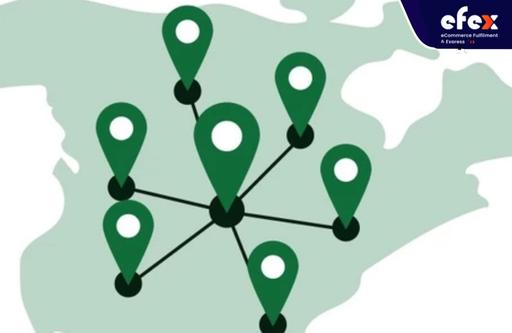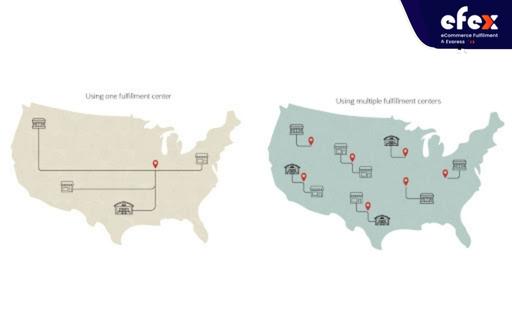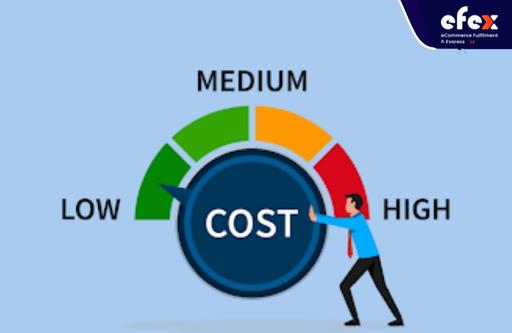
More Helpful Content
An increasingly common method of managing inventory is distributed inventory, in which goods are dispersed across distribution centers or warehouses located strategically throughout the world. Businesses can face some of their toughest inventory system and distribution difficulties. They are delivering the proper number of products to the right locations as fast and affordably as possible.
However, these issues can tackle by effectively syncing inventory place and demand. Distributed inventory was formerly only used by major merchants or manufacturers, but expanding companies across several industries are now widely adopting the strategy.
For instance, the rising demand for flexible, JIT (just-in-time) supply to prefabrication facilities and industrial sites is pushing a rise in the use of distributed inventory systems together with improved demand prediction as well as inventory planning. Without further ado, let's get into the definition and examples of distributed inventory.
A distributed inventory strategy involves storing and shipping merchandise from various fulfillment centers or warehouses distributed across a variety of locations.

Centralized inventory, on the other hand, is a distribution method where businesses have a single warehouse or center to control everything that arrives and departs. Inventory may be transported to all the locations where it is required by splitting it up into numerous shipments. Inventory is kept near to the end user by being distributed across several fulfillment centers, which also greatly minimizes travel time and lowers shipping costs.
To maintain their operations running well, businesses frequently need to have a variety of inventories on hand. Inventory can also relate to raw materials or component products, items or parts required for maintenance, repair, and operations (MRO), as well as packing supplies in addition to completed goods (items ready for sale).
The "hub-and-spoke" approach to inventory distribution enables businesses to keep their essential goods nearby. Benefits for both company and the customer include quicker delivery, lower shipping costs, and better inventory control.
Businesses must take into account how choices are made in a dispersed inventory system. They might choose a decentralized or centralized strategy.
A team or individual at the top, maybe at corporate headquarters, chooses how much inventory will be spread throughout the many fulfillment centers or warehouses under a centralized distributed inventory method. Decisions are made from a single point, in other words.
Decisions about the inventory are made locally, or at each fulfillment center, under a decentralized distributed inventory model. For this strategy to be effective, it is essential that each decision-maker has access to information on consumer and product demand.
Using a form of hub-and-spoke concept, distributed inventory seeks to increase the effectiveness of distribution initiatives. A producer or supplier stores its products in a centralized warehouse under a classic inventory model. After a client puts an order, it is processed for distribution at the center and then delivered to the customer.
Whenever a buyer puts a purchase, the warehouse or fulfillment center that is nearest to them has all the products in stock, or can complete the order for the least amount of money, will pack and dispatch the order. Whenever there is an unexpected surge in the demand for a particular product, these fulfillment centers can also assist others in the system. Businesses can either run their own "captive" fulfillment centers or hire outside companies to run their multi-warehouse systems.

Customers have grown to demand fast, affordable delivery across all industries. Companies are best placed to satisfy such demands cost-effectively and gain a competitive edge by distributing goods over numerous geographically distributed warehouses or fulfillment centers. The distributed inventory model performs exceptionally well in a variety of situations.
Businesses who transport heavy items, such as sacks of cement, boxes of tiles, or pieces of wood and pipes, pay a lot of money to ship their goods across great distances. By distributing these commodities across several distribution centers that are closer to their clients, they may realize considerable cost reductions.
Using historical or seasonal data to predict inventory requirements can be helpful, but unanticipated changes in consumer behavior and supply-chain interruptions can cause disaster. If the closest location is out of stock, you may simply fill the order from a backup location without spending extra money on replenishment and expedited shipment.
A centralized warehouse strategy could work for young or small businesses to satisfy their early demands. However, if sales increase, shipping prices are probably going to follow suit. In reality, having inventory near to clients lowers rising delivery costs, which may soon surpass the cost of establishing scattered fulfillment centers.
When a business's customers are dispersed geographically, a distributed inventory strategy enables them to complete orders more quickly and affordably than if they were to be sent from one location. As international and cross-border transactions rise, this is especially crucial.
A distributed inventory model has a number of possible commercial benefits. Benefits range from tactical to strategic, and they can enhance a company's competitiveness and customer pleasure.
The distributed inventory system distributes stock to a number of sites that have been carefully selected based on their accessibility to customers. You can observe whether parts of your company have a lot of customers and whether a fulfillment center is close by. By not having to complete purchases from a single place, you may greatly cut shipping and transportation expenses.

For example, the industry standard for eCommerce delivery is undoubtedly Amazon. Because of the two-day delivery offered by the retail behemoth, consumers now demand it. This finally compelled other online retailers to investigate and take into account expedited shipment. Distributed inventory allows merchants to take advantage of the warehouses of their shipping partners, ensuring that orders are delivered closer to the customer and at a lower cost.
You may exercise stricter inventory control in such fulfillment centers by allocating goods to different warehouses in accordance with demand and geography. Warehouse managers can concentrate on the fulfillment center that has been given to them and perform better inventory management instead of worrying about the enormous volume of inventory at one main warehouse.
You don't have to send out every item by yourself, which is a benefit of distributed inventory. You may work with 3PL businesses to effectively fulfill orders. With the aid of those 3PL businesses, this presents a chance for market expansion.
Shipping expenses that surpass warehousing costs are likely to be encountered by retailers looking to expand their companies. The most economical course of action in this situation is to manage activities from many fulfillment centers.

When procedures are spread over several sites, a business frequently has the ability to handle and complete more orders. Furthermore, businesses that employ a distributed inventory strategy do not necessarily need to plan how to fulfill an increasing order number. They can work with outside logistics companies to decide how to grow and manage that volume most effectively. High-volume online retailers can also benefit from an improved distributed inventory management system as 3PLs with numerous warehouses often get their own technology for integrity and productivity.
Not surprisingly, companies pursuing a distributed strategy to inventory can minimize the time required to get items to customers – another method to increase customer happiness.
Items are less prone to loss or damage in transportation since they do not have to go as far. Savings are generated for the business that makes such items as a result.
A company must handle the process of adding the products back to stock or discarding them when a consumer wishes to return a purchase.
Global marketplaces provide businesses with a tonne of opportunities, but shipping across borders is difficult due to increasing prices and customs issues. Using nearby warehouses or fulfillment facilities can successfully lessen or eliminate those problems.
A distributed inventory strategy has numerous benefits, but there are also certain drawbacks that businesses should be mindful of. One is cost, particularly for new businesses looking to expand.

Extra locations frequently result in higher costs, whether from investing in more fulfillment facilities or using outside logistics companies. For this strategy to be financially successful, businesses must also have great demand forecasting capabilities. Another aspect to take into account is management. The complication of partnership and customer relations management may rise for certain firms as a result of their requirement to interact with several 3PLs.
When collaborating with several vendors, it could also be necessary for the business to employ diverse technologies, including order management systems. These problems should be reduced through communication and sharing measurement systems, which are essential to success.
Lastly, it might be challenging for businesses to get beyond inventory management obstacles and possess all the inventory knowledge necessary for a distributed inventory system to succeed. To prevent holding too many or too few stocks, it needs excellent demand management of supply chain analytic skills – even when dealing with 3PLs.
To leverage the potential advantages of a distributed inventory system, businesses need to be smart in the fulfillment centers they choose. They must first figure out who their consumers are and which products are in the most demand. The best goods may then be placed in the perfect locations. For instance, a producer of building supplies might place its inventory close to locations with active construction markets and customers, ensuring that its most sought-after and/or challenging-to-transport products are kept in stock nearby.

The probability that the company will be able to deliver items swiftly and using the least expensive method increases with the proximity of the inventory to the client. Additionally, a company might be able to guarantee one-day or two-day shipment. For other companies, collaborating with a 3PL (third-party logistics provider) who currently oversees several scattered warehouses is more practical. By doing so, the business will benefit from the partner's expertise and experience while lowering the initial expenses related to establishing their own dedicated warehouses or fulfillment facilities. For distributed inventory systems and fulfillment in e-commerce, for example, businesses could choose to collaborate with third-party logistics services or even much bigger retailers like Walmart or Amazon in order to access their inventory location services and provide faster shipments and more reliable service.
Undeniedly, it is hard to meet the needs of numerous clients using conventional supply chain operations. That's time to apply a distributed inventory system. This will help enhance inventory control, speed up deliveries, lowers shipping costs, and simplifies inventory management. In the modern environment today, Leading inventory management technologies to automate procedures like restocking and make it easier to estimate demand. They also make it easier to maintain inventory across various locations. Therefore, businesses can handle this more complicated distributed approach. Hope you have a good time with EFEX.


